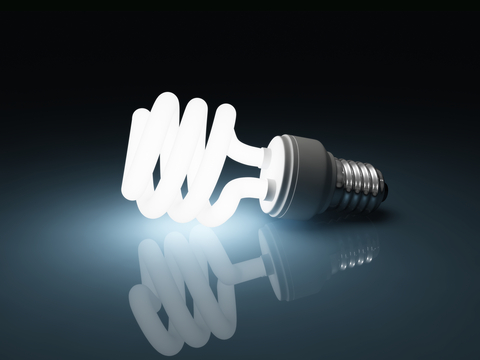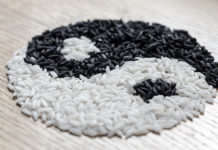by: Dr. Craig A. Maxwell
In 2007, the Energy Independence and Security Act mandated a phase-out of all incandescent light bulbs in favor of energy efficient compact fluorescent bulbs. While this change is being billed as a good way to go green and protect the environment, fluorescent light bulbs have been linked to the development of cancer and other chronic conditions.
Possible Cancer Risks Associated with Fluorescent Light Bulbs
- Ultraviolet Radiation
You wouldn’t think you would have to worry about ultraviolet radiation indoors but studies have shown fluorescent bulbs could pose a skin cancer risk. Studies have shown that the UV radiation is so strong, it could increase the risk for the development of cutaneous malignant melanoma.
- Mercury
The recorded concentrations of mercury near one fluorescent light bulb are up to 800 mcg/m3. This is eight times the average eight-hour exposure limit allotted by OSHA, (which is 100 mcg/m3). Even small amounts of mercury have been shown to suppress your killer T-cells and have a negative impact on immune function. When your immune system malfunctions over long periods of time, it can prevent your body from being able to eliminate cancer cells before it takes hold.
- Naphthalene
Naphthalene is a volatile white crystalline compound that has been touted as a “reasonably-anticipated human carcinogen” by the International Agency for Research on Cancer (IARC).
- Styrene
Styrene is a flammable petroleum byproduct that has been listed by the U.S. National Toxicology Program as a human carcinogen.
Incandescent Bulbs to Be Phased Out of the Market
Due to the 2007 Energy Independence and Security Act, only light bulbs that meet strict energy-efficiency standards are permitted to be manufactured or imported into the United States. Since incandescent bulbs cannot possibly meet these standards, they will be completely phased out by the end of 2014.
Protect Yourself When a Fluorescent Bulb Breaks
Fluorescent bulb manufacturers assure us that their product is not only better for the environment but perfectly safe to use. If this is true, why has the Department of Health put such a complicated clean-up process in place should one break in your home?
Here are the steps you have to follow if a fluorescent light bulb breaks in your home:
|
|
More Possible Side Effects of Fluorescent Light Bulbs
In addition to containing known carcinogenic chemicals, fluorescent light bulbs have also been shown to cause other side effects from everyday use.
The flicker, hum, and spectrum of these bulbs have been shown to contribute to the development of the following health problems:
- Anxiety Attacks
Many people who struggle with anxiety and panic attacks notice that exposure to fluorescent bulbs cause their symptoms to worsen.
- Depression
Electromagnetic frequency hypersensitivity causes a person to actually feel and hear the subtle buzz emitted by fluorescent bulbs and can contribute to and worsen depression. Studies have shown that laboratory rats exposed to fluorescent lights have increased levels of the stress hormone, cortisol.
- Migraine Headaches
The buzzing and flicker of fluorescent bulbs has been shown to trigger migraine headaches.
- Immune Dysfunction
If you already have an autoimmune disease, fluorescent light bulbs may make it worse. Ultraviolet lights have been shown to trigger lupus flare-ups. Furthermore, the mercury contained in fluorescent lights may trigger the development of autoimmune disease.
- Sleep Dysfunction
Fluorescent light bulbs have been shown to cause insomnia by elevating your cortisol levels and interfering with your circadian rhythm. This problem is so bad, in fact, that NASA astronauts are feeling the effects. NASA has spent $11.4 million to swap out a total of 85 fluorescent lights for LED fixtures on the International Space Station (ISS) so astronauts can get some much-needed rest.
Reduce the Effects of Fluorescent Light Exposure
Incandescent bulbs will soon be obsolete so you will have limited options in how to light your home. You can still protect yourself from the potential side effects of fluorescent light exposure by following these tips:
- Get More Natural Sunlight
One of the easiest ways to protect yourself from the effects of fluorescent bulbs is to get more sunlight. Get outside as often as possible and use natural lighting in your home whenever you can. Another idea is to install skylights in your home if this is financially feasible.
- Rose-Colored Glasses
You’ve heard the expression, “Seeing life through rose-colored glasses” but you may have never thought it had a functional meaning. For years, optometrists have been recommending using glasses with a slight rose-colored tint to offset the migraine headaches, irritability, anxiety, and eye strain associated with long-term exposure to fluorescent bulbs.
- Get Tested for Vitamin D Deficiency
I also advise most of my patients to be tested for vitamin D deficiency as it is the most prevalent vitamin deficiency in the United States and Canada. Vitamin D deficiency often occurs as a result of extreme lack of exposure to sunlight.
Lack of sunlight coupled with constant exposure to fluorescent lights can contribute to depression and autoimmune disease. This is why I recommend testing for vitamin D deficiency using Direct Labs Vitamin D, 25 Hydroxy Test Kit. If your levels are low, you can always add a Vitamin D3 supplement to your diet.
- Use Chlorella to Detoxify Mercury from Your Body
You can counteract the effects of mercury toxicity from fluorescent bulbs and other sources by using chlorella. Chlorella is a single-celled fresh-water algae that helps detoxify your body from mercury by helping expel it in your urine. Chlorella helps purify your blood and helps clean away toxins so mercury does not have the chance to compound in your system.
Fluorescent bulbs are the wave of the future but they can have serious consequences for your health. I recommend getting plenty of natural sunlight each day and supplementing with vitamin D and chlorella to offset its effects.
Resources:
http://www.ncbi.nlm.nih.gov/pmc/articles/PMC2535642/
http://www.ct.gov/dph/lib/dph/environmental_health/eoha/pdf/cfl_fact_sheet.pdf
http://www.ncbi.nlm.nih.gov/pmc/articles/PMC1834365/
http://ntp.niehs.nih.gov/ntp/roc/twelfth/profiles/naphthalene.pdf
http://ntp.niehs.nih.gov/ntp/roc/twelfth/profiles/styrene.pdf









I’m glad I stumbled on this article. My son and I have been having terrible headaches since we installed fluorescent lights in our home. We may have to switch back. Thank you!
Hello Ashleigh,
Glad to be of help!
Please let me know how your son does.
All My Best,
Dr. Maxwell